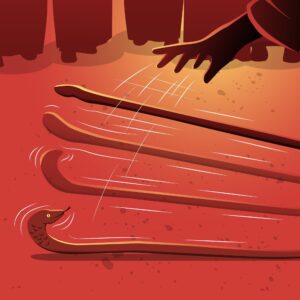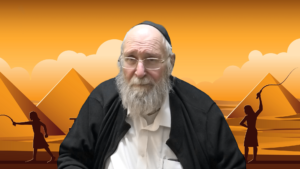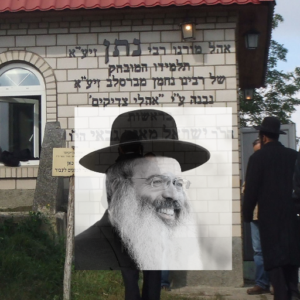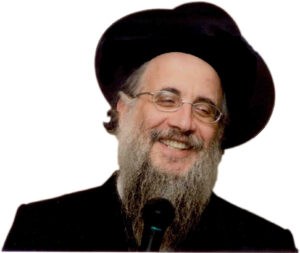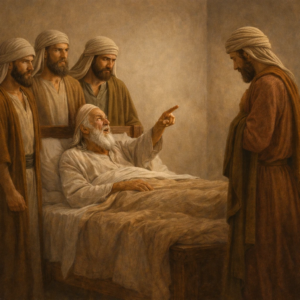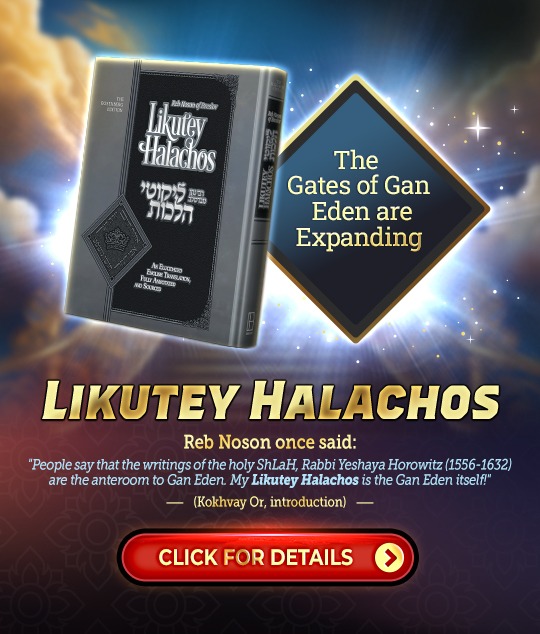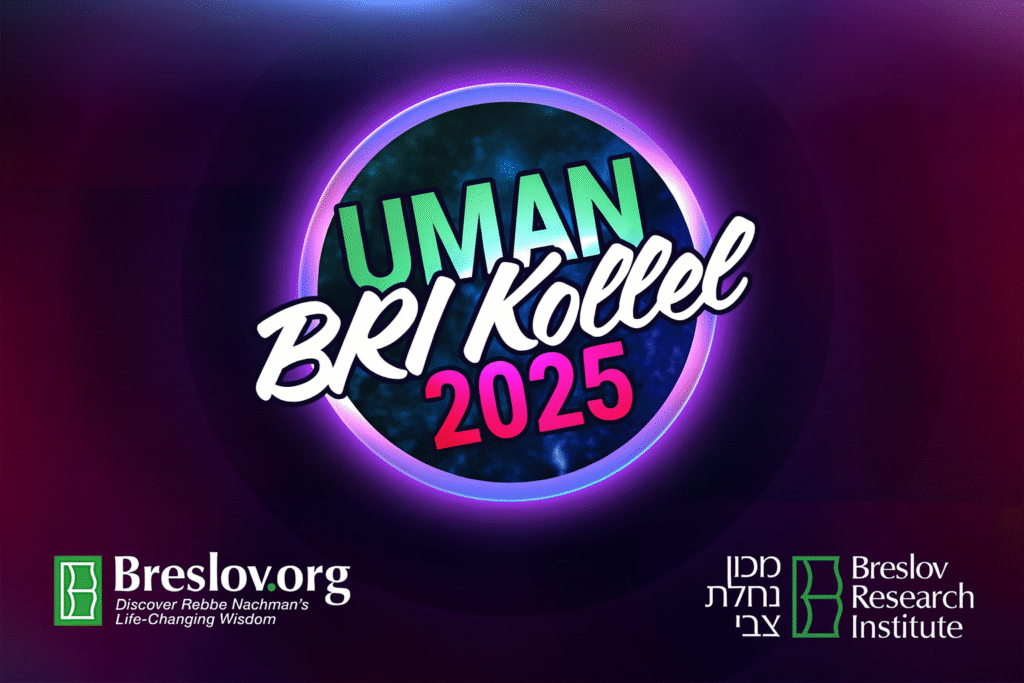The Greatest Revelation
ADAPTED FROM HIS AUDIO SHIUR ON SICHOS HARAN 141
KEDUSHAS HA’BRIS
Parshas Ki Seitzei warns us about immorality and the need to guard kedushas ha’bris. From the laws of the yefas toar, to adultery and forbidden unions, the Torah reveals that one of life’s greatest battles is maintaining holiness in this area. Later in the parsha, the Torah addresses the case of mikra layla — a nocturnal emission — teaching that even such a hidden matter carries laws of purity and requires careful correction. It is precisely here that Rebbe Nachman’s greatest revelation comes to light. Sichos HaRan 141 deals with Torah Tzaddik-Beis in Likutey Moharan Tinyana, which has been classified as the greatest revelation of all time. In this Torah, Rebbe Nachman reveals the Tikkun HaKlali as the correction for the worst sin in existence, the sin, chas veshalom, of zera levatalah, wasting seed. While some maintain that there is no possible teshuvah for that sin, Rebbe Nachman reveals the Tikkun HaKlali as a means of correcting it and erasing it completely.
Tikkun HaKlali consists of ten specific chapters of Tehillim. Throughout the generations, tzaddikim have searched for this special formula. The first was Adam HaRishon, the first tzaddik who ever lived, followed by tzaddikim in each generation (Eiruvin 18b). They all sought to determine which ten chapters had the power to correct this sin completely. No one succeeded in obtaining this precious information until Rebbe Nachman was zokheh. He said that HaShem had granted him the chesed to be the one to discover this secret formula and reveal it to the world.
All the tzaddikim who wanted this information knew the 150 chapters of Sefer Tehillim. They also knew the Gemara (Pesachim 117a), which states clearly that Sefer Tehillim is based upon ten types of chapters, which Rebbe Nachman revealed. What are these ten types of chapters and what is special about them?
TIKKUN HAKLALI CURES PEGAM HABRIS
The Shekhinah is bleeding, kivyakhol, with dam niddah. When a woman is a niddah, she is tamei and must be separated from her husband. In a spiritual sense, when the Shekhinah is separated from HaShem, kivyakhol, it is sent into galus; Kudsha Brikh Hu and Shekhintei are separated. The letters Vav-Heh of HaShem’s Name are separated. The Heh is in galus, and to bring it out of galus we must do teshuvah. The word teshuvah (תשובה) can be read as “tashuv heh” (תשוב ה), the heh shall return to her husband (Zohar Naso 122a; see also Likutey Moharan I, 29:3 and 35:1). This is done by purifying the dam niddah, which is caused primarily by chillul habris, which is a chillul klali. You need the Tikkun HaKlali to remove the ten poisons of the arrows and bring about a cure. The Tikkun HaKlali is accomplished through these ten chapters of Tehillim.
AN AGE-OLD SEARCH
Rebbe Nachman revealed that tzaddikim had searched for this tikkun from the beginning of time. The first tzaddik gamur was Adam HaRishon. He was the holiest tzaddik in his time and, of course, practically of all time (Eiruvin 18b). His students were the leading angels in Heaven who came to him for lessons. The intelligence of angels far exceeds that of humans; yet Adam HaRishon was far above them. He was from a higher world. The Arizal explains the heights that Adam HaRishon reached at the time of Creation — even his body was from the upper worlds — and he was the first to spend his lifetime in search of this hidden formula, these ten chapters of Tehillim. He did not succeed. After him came his son, Sheis, and then Enosh. The next tzaddik was Chanoch, who lived until the age of 365, the gematria of shin-samekh-heh, alluding to the fact that he completed the Ten Sefiros during his lifetime. Shin, three hundred, represents the three upper sefiros: Keser, Chokmah, Binah. Samech, sixty, represents the six next sefiros: Chesed through Yesod, the vav of HaShem’s Name. The letter heh is the Malkhus. He subsequently left this world and became the chief angel in Heaven, the Rosh Yeshivah of the Mesivta Derakiah, the Malakh Mem-Tes. During his lifetime, too, he searched for the revelation of this formula. He did not succeed.
Throughout all forthcoming generations, every tzaddik attempted to find it. Most, Rebbe Nachman said, did not succeed. Some succeeded partially; they reached a certain level of understanding, and then they were suddenly nistalek, they passed away and could not complete it. Rebbe Nachman said, giving thanks to HaShem, “I succeeded with the help of HaShem and I have this formula to reveal to the world.”
It is best, of course, if a person says these ten chapters with deep kavanah, putting his heart into it and concentrating on the words; but even if a person says them without any feeling, they are still extremely beneficial.
AN ETERNAL VOW
Rebbe Nachman also appointed these two witnesses, Reb Naftali and Reb Aharon, for something that would take place after his histalkus. He made a promise, a vow, that anyone who would visit his grave in the city of Uman, say these ten chapters of Tehillim, and give a prutah, the minimum amount, to tzedakah for the sake of his neshamah, Rebbe Nachman said, “I will do everything in my power, to the furthest extent, to help that person completely.”
The Zohar HaKadosh says that there are seven levels of Gehennom, each one lower and harsher than the one before it. It is possible for a person, through his sins, chas veshalom, to descend lower than the first level, down to the second, to the third, and so on, until the seventh and lowest level, the be’er shachas. The Zohar HaKadosh says it is possible for a person to be such a ruthless sinner, he can be placed below even the seventh level of Gehennom, chas veshalom. That place is called “the point of no return,” and one who reaches that place has no hope; he cannot make amends for his deeds (Zohar Chadash, Lekh Lekha).
But Rebbe Nachman said, “Even a person who is entrenched in the seventh level of Gehennom — or even beneath that level — I promise that I will take him out of Gehennom.” This is the power of the tzaddik emes.
It is a known fact that the tzaddik emes has the power to visit Gehennom and to release anyone that he wishes to (Chayey Moharan 298). Rebbe Nachman said, “I make this promise to one who visits my tziyun. No matter what he did during his lifetime, no matter how lowly he is, even if he is in Gehennom in the point of no-return, I will personally take him out.”
- 0 comment



